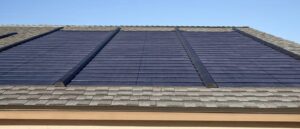There seems to be a popular misconception that the use of natural light involves large expanses of southern facing windows. I can’t count how many places I have been where the entire south facing window wall has the blinds constantly drawn or unsightly tinting film on the glazing. From conversations it is easy to determine that the southern glazing sounded great at design time. Yet attention was not giving to solar control either through devices or glazing selection.
There are six basic concepts to any successful use of daylighting. In this article we will cover the first two.
• Separate apertures for vision and daylight
• Make the building act as a luminaire
• Assess lighting needs for typical visual needs
• Use of apertures to create focus and mood
• Integrate the daylighting scheme into the architecture
• Integrate the daylighting scheme with building systems
Separate apertures for vision and daylight
I want to start with the biggest mistake that is made when implementing daylighting. Namely that ribbon windows or large expanses of glass equate to effective daylighting strategies. Nothing can be further from the truth.
If you have ever sat near a south facing window on a warm spring day you know what I am talking about – solar heat gain. While it can be interesting to watch a sun beam move across the room, it isn’t very useful once that beam strikes the paper you are reading or creates glare on the monitor. This type of glazing is typically referred to as “vision glass” as it creates the visual connection between the indoors and out doors. Here we often specify a lower visible transmittance in order to soften the light coming in. Additionally exterior features such as overhangs can be used to minimize direct sunlight through this glazing.
The other type of glazing is referred to as “daylighting glass”. This type of glazing is placed at a higher level, typically above head height. These windows also utilize lighting controls such as internal or external light shelves or other devices that reflect light into the space. These devices should disallow a direct view and also bounce the light into the space so that it is indirect and thus more evenly distributed. With this glazing we typically want to maximize visible transmittance so we can get the fullest amount of daylight into the space.
Make the building act as a luminaire
Good daylighting minimizes the need for supplemental lighting during daylight hours. In order to accomplish this, the building needs to be able to provide consistent interior lighting levels. This means that the design should avoid the use of direct illumination (see above) and maximize the use of the skydome. The use of indirect daylighting, versus the sun directly, reduces glare and high contrast ratios, something that good luminaire design does as well.
This is also where proper finish specification comes into play. We want to direct the light as far into the building as possible. To do this it is best to use light colored surfaces that have a matt surface. This diffuse reflection helps to, you guessed it; reduce glare and high contrast ratios.
By using the skydome as opposed to the sun it is also possible to provide for more consistent lighting levels throughout the day. The best way to reduce solar heat gain and glare is to use the northern skydome. The southern area can be used when designed carefully. It is usually best to avoid east and west apertures because it is difficult to control the early morning and evening sun.
Be sure to bookmark the EVstudio Online Magazine to read the next two articles in this series.










